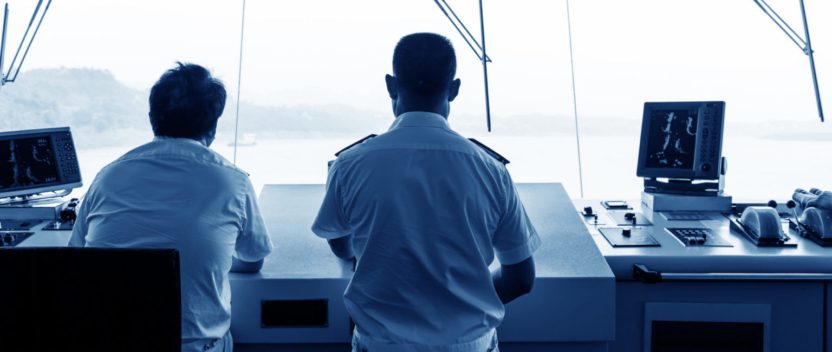Full steam ahead for unmanned ships?
The industry conversation on the topic of unmanned ships has entered turbulent waters. Its proponents say they can deliver the technology – though the initial project groups are only now investigating the subject in any depth – but doubts have been expressed about the regulatory framework that would permit their use.
The issues are numerous. Are unmanned vessels actually ships? Can they comply with Collision Regulations (COLREGS), let alone SOLAS, MARPOL, STCW or UNCLOS? What is the view of Flag States, class and insurers? Perhaps the route to smart ships of the future is not so smooth after all.
Not so, says Dr Alexandros Ntovas of Queen Mary University of London, Centre for Commercial Law Studies. In fact, he believes there is nothing in existing maritime regulation to prevent the use of unmanned ships with differing level of autonomy today should the technology be judged to be safe and the parties involved agree to its use.
Formerly of Southampton University and an expert in the laws of the sea and navigation, Dr Ntovas with other members of the Institute of Maritime Law (Southampton) under the direction of Professor Mikis Tsimplis, provided a report to the European Defence Agency on the liability position in respect of accidents involving unmanned maritime vehicles. It is in this sector that interest has been strongest to date, with a handful of navies already developing unmanned assets.
The difference to these efforts is the scale of ambition in unmanned commercial shipping; carrying cargoes at a size large enough to be economical. Even so, he thinks their emergence is a matter of when not if. He is keen to make a distinction between unmanned and autonomous assets, the former remotely piloted, the latter entirely self-governing, and thinks it is unmanned assets we will see sailing first.
He sees two early scenarios, short voyages between co-operative states, such as across the Baltic Sea and point-to-point ocean voyages that touch perhaps only two national jurisdictions.
“The studies by the technology developers show that in terms of COLREGS, the software can already be compliant, although they do not preclude the possibility of errors,” he says.“An unmanned ship can fall within the remit of most of the regulations because the definition of a ship does not necessarily imply a human presence. An unmanned vessel is the same as manned one in that context.”
Apply that thinking further and at a fundamental level, there are no legal constraints to operating unmanned ships.
“Nothing can be construed to the contrary in presuming an unmanned vessel is not a ship. Seafarers and crew are there to support the vessel so if the vessel has reached the edge of technology where the crew can be removed, it is still a ship. Human presence does not constitute a ship,” he adds.
But what about the need to ensure compliance with the three IMO pillars – SOLAS, STCW and MARPOL – assuming no need for compliance with MLC. Again Ntovas says the current IMO regime does not prohibit unmanned ships, provided certain conditions are met.
“Certain chapters of SOLAS and STCW provide ‘escape clauses’ which enable the contracting state to demonstrate compliance to criteria or requirements in ways that do not hold back technology advances,” he says. “Certain parts, though not all, of SOLAS and COLREGS can be revised in their application if needed. As long as there is an equivalence criteria, compliance can be achieved in other ways.”
Ntovas says he has had numerous discussions with investors and developers, for whom the ideal scenario is to fit the technology to the existing regulatory framework rather than wait for its revision. On this basis the way is clear for a shipowner to develop an unmanned vessel and providing he has the approval of Flag State, class and insurer, offer it in the market.
The other pillar to consider is the UN Convention on the Law of the Sea (UNCLOS). UNCLOS provides for freedom of navigation and enshrines the right of states to flag a vessel which, providing it has class and insurance can be sailed on the high seas.
It is not contrary to UNCLOS for the state to exercise those rights in a particular way, such as sailing an unmanned ship “because what has not been expressly forbidden can be allowed as long as it does not infringe on the freedoms and rights of the other states” he says.
UNCLOS includes a duty of Due Regard which reflects the state’s responsibilities when using any technology so that it does not place unreasonable risk on other users of the sea. The Flag State will need to demonstrate that the technology is ‘as good as a human or better’ and that it has discharged its duty of care.
It is possible though that while some flag states choose to forge ahead, some coastal states will assess the risk in different ways and seek to limit access to their ports or in their waters. In practice, Dr Ntovas says, states will not be in a position to prevent innocent passage of unmanned ships through their territorial waters.
Whether such vessels pose a greater risk than manned ones is debatable but ultimately states will only be able to ask for additional requirements, requiring tugs for marine protection or navigational safety issues.There are practical issues too – a conventional vessel with an experienced master can berth anywhere suitable but an unmanned ship will need special conditions to be met and probably dedicated facilities.
Meantime, states will work bilaterally to move the process forward. “In practice, under a scenario such as an unmanned bulk carrier taking grain from the US to Japan voyage, it will only touch two national zones and will be on the high seas most of the way,” Dr Ntovas points out.
That may be true, but many of the sexy renderings of unmanned ships produced so far are of containerships. Such a vessel would be working from port to port, in and out of EEZs and territorial waters, not mention through narrow Straits and busy channels. Dr Ntovas says one way forward to obtain the agreements needed would be a protocol that amends mutatis mutandis all the necessary IMO instruments in a uniform way. These changes would still have to be written into national law, a process that could take longer than developing the unmanned ship.
But Dr Ntovas is not naïve about the challenges that exist that before unmanned ships make an appearance in any numbers.
In fact he says, focussing too much on the actions of states at this stage is a mistake. “The first group to persuade is the shipowners. Most have a young fleet that could be trading for 25 years, so the business case for unmanned ships does not exist right now.”
Equally, the idea that they will remove human error from shipping is a simplification too far, he says, since humans will design, programme and make them. Some human elements can never be programmed but Ntovas says many masters are more receptive to modern technology than they are given credit for.
“A modern bridge is a pretty automated place but it is not the masters who are sceptical. The bigger issue is chief engineers, they feel they have not been heard in this debate and have not expressed their views. Ships will still need to be monitored, repaired and maintained. So which is harder to remove – the captain or the chief engineer?”
Where the concept could be highly appealing is in the plans for sea and vessel traffic management systems such as ACCSEAS and Mona Lisa, as well as the IMO’s own e-Navigation programme. Greater access to and control of ships from shore suggests the unmanned ships could be more easily integrated than existing manned vessels, because the requirements could be designed-in from the keel up.
It’s a debate that will doubtless continue – though the time horizon on which the ships may appear could be shorter than we think, especially if the perceived legal barriers are nothing of the sort.
“It is not possible to separate the law from the technical issues, they have to be considered in tandem,” Dr Ntovas concludes. “My response is simple; no matter how fast and how far the technology moves, the law is already there. The law never leads, it is always present and it evolves, but there is never a gap.”


